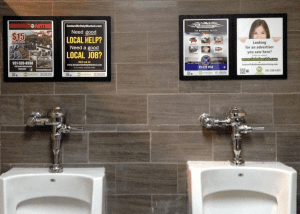In the ever-crowded digital landscape, brands are constantly chasing the next “hack” for visibility. But what if the most effective strategy doesn’t require ad spend at all? That’s where referral programs come in—a form of cheapest advertising that turns your happiest customers into your most effective marketing channel.
Referral marketing isn’t just affordable; it’s rooted in trust, which is why it works. In this blog, we’ll explore how referral programs serve as one of the cheapest ads available, how to structure them, and why they’re essential to brands of any size looking to grow without burning through budgets.
Cheapest Advertising: Why Referrals Still Reign Supreme
When people hear “cheapest advertising,” they often think of flyers, Craigslist posts, or boosted social media content with minimal budgets. But few strategies match the ROI of referral-based marketing.
Here’s why:
People trust recommendations from friends more than paid promotions.
Referrals scale organically, without additional media costs.
They provide high-intent leads, reducing the need for persuasion.
In fact, according to Nielsen, 92% of consumers trust word-of-mouth recommendations more than any form of cheapest advertisement.
Cheapest Ads in Action: What Is a Referral Program?
A referral program incentivizes your existing customers to bring in new ones. It works best when:
Rewards feel meaningful (but not expensive).
The process is frictionless.
The reward benefits both the referrer and referee.
Example: “Give $10, get $10” is a classic format used by companies like Uber, Dropbox, and CashApp—brands that grew massively through some of the cheapest ad mechanisms in modern marketing.
Cheapest Advertising Headline Strategies with Referral Programs
When building campaigns around referrals, ensure your cheapest ads deliver these three key benefits:
🔹 Clear Value
Be explicit about what both parties gain. A vague “share and earn” won’t move the needle.
🔹 Simplicity
The fewer clicks and fields required, the more successful your cheapest advertisement will be. Use unique referral links and auto-fill forms.
🔹 Social Proof
Include testimonials or “Top Referrers” leaderboards. People want to see that others are winning.
Structuring a Referral Program for the Cheapest Ad ROI
Ready to implement a program that doubles as your cheapest advertising engine? Follow this step-by-step approach:
Define the Incentive
Choose something that adds value but doesn’t drain profits. Examples:
Store credit or product discount
Exclusive access to a VIP product
Charitable donation in the referrer’s name
Bonus service time (ideal for SaaS)
Avoid offering cash unless your margins allow. Make the cheapest ad work harder with minimal cost.
Choose the Distribution Platform
Your referral program can live on:
Your website (via pop-ups or banners)
A thank-you email sequence
Printed in-hand materials like packaging or receipts
In your app or dashboard
Think of every channel as a potential cheapest advertisement placement.
Create Tracking Infrastructure
Use referral software like:
ReferralCandy
Yotpo
Post Affiliate Pro
These platforms automate the link tracking and reward delivery—making your cheapest ads highly scalable.
Cheapest Advertising Examples: Brands Winning with Referrals
📦 HelloFresh
This meal kit giant embedded referral codes into every shipment, encouraging customers to invite friends and family with “free box” incentives. It reduced customer acquisition costs while boosting brand reach—all without traditional ad spend.
📱 Dropbox
Dropbox’s legendary “get more storage” referral model helped them grow from 100K users to 4 million in just 15 months. No expensive media buys—just a brilliant cheapest advertising loop.
🧴 Glossier
The beauty brand built its empire through customer ambassadors. Their referral program rewarded shares with discounts—turning users into micro-influencers and eliminating the need for flashy cheapest advertisement campaigns.
Tying In-Hand Ads to Referral Campaigns
Don’t underestimate the power of physical reminders. Combine in-hand media (like pharmacy bag ads, bar coasters, or coffee sleeves) with referral callouts to create hybrid offline-online campaigns.
Examples:
A QR code on a pizza box linking to a referral offer
A discount code printed on a takeout bag for referring a friend
A “give $20, get $20” message printed on salon appointment cards
These placements act as cheapest ads with high visibility and personal context.
Metrics to Monitor Referral Campaigns
Like any good cheapest advertising channel, referral success should be measurable. Key metrics to track:
Referral conversion rate
Cost per acquisition (CPA)
Number of shares per user
Repeat customer rate from referrals
Lifetime value of referred users






